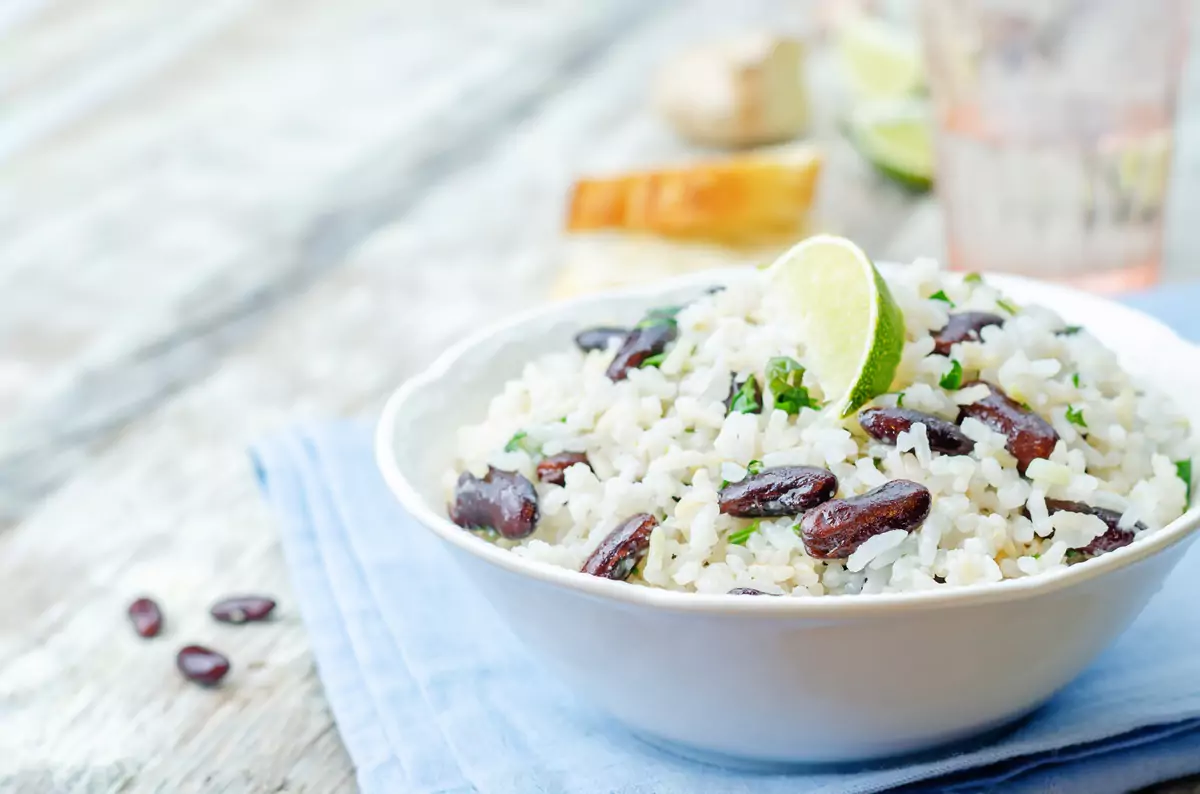
25% OFF Site Wide






Which is Better for Diabetics: Grits or Rice?


Table of Contents
- The Critical Role of Diet in Diabetes Management
- Why Blood Sugar Spikes Matter
- The Importance of Glycemic Index (GI)
- Understanding Grits and Rice
- Nutritional Aspects of Grits
- The Many Ways to Enjoy Grits
- Understanding the Rice Spectrum: White, Brown and Beyond
- Nutritional Profile of Rice: What You Need to Know
- The Versatility of Rice: Side Dish to Main Course
- Grits and Diabetes
- The Impact of Processing on Grits' Nutritional Value
- Creating Diabetes-Friendly Grits Dishes
- Rice and Diabetes
- Understanding Rice Processing Methods
- Crafting a Diabetes-Friendly Rice Dish
- Comparing Grits and Rice
- Weight Management and Diabetes
- Comparing Blood Sugar Impact
- The Role of Supplements like SugarMD Super Berberine
- Popular Recipes for Diabetics
- Low-GI Grits Recipes
- Low-GI Rice Recipes
- Incorporating Different Types of Grits
- Choosing Healthy Fats
- Precautions for Enjoying Grits or Rice While Managing Diabetes
- Be Mindful of Portions
- Choose the Right Cooking Method
- Watch the Add-Ins
- Pick Less Processed Options
- Regular Blood Sugar Monitoring
- Conclusion
- About The Author
If you're managing diabetes, choosing the right foods is crucial to maintaining stable blood sugar levels. Today, let's tackle a dinner-table debate that many have pondered: "Which is better for diabetics, grits or rice?" If you're wondering why this choice matters, it's simple.
The wrong food can lead to blood sugar spikes and a range of complications. Fear not! This article aims to be your comprehensive guide, breaking down the nutritional profiles, glycemic index and other essential factors of grits and rice. We'll even sprinkle in some expert opinions and tasty recipes. So, sit back and get ready for an informative journey that your body—and taste buds—will appreciate.
The Critical Role of Diet in Diabetes Management
Type 2 diabetes is a chronic disease that impacts how your body processes glucose, its primary energy source. Unlike Type 1 diabetes, where the body can't produce insulin, those with Type 2 either resist insulin's effects or don't produce enough.
This resistance results in elevated blood sugar levels, setting off a domino effect of health issues if not managed well. Consider diet as your steering wheel in diabetes management—it guides you. Consuming foods high in sugar and carbohydrates can trigger weight gain and blood sugar spikes.
Conversely, a balanced diet rich in fiber, protein and healthy fats can help stabilize blood sugar. It's not merely about sugar avoidance but about understanding the nutritional value of different foods. For example, olive oil and certain cheeses can fit into a diabetes-friendly diet if used sparingly.
Why Blood Sugar Spikes Matter
Think of your blood sugar levels as a calm lake. A spike is akin to throwing a massive rock into that calm water, causing ripples. These "ripples," or spikes, can result in symptoms like fatigue, headaches and increased thirst. Over time, recurrent spikes can cause severe issues like nerve damage and heart problems. Hence, opting for foods that minimally impact blood sugar is crucial.
The Importance of Glycemic Index (GI)
The Glycemic Index (GI) ranks carbohydrates based on how quickly they raise your blood sugar levels. High-GI foods are quickly digested and absorbed, causing rapid blood sugar spikes. In contrast, low-GI foods are processed more slowly, leading to a gradual increase in blood sugar levels.
For instance, stone-ground grains often have a lower GI than their quick-cooking counterparts. Knowing the GI of foods, such as grits and rice, can aid in making better dietary choices.
Understanding Grits and Rice
Grits, a Southern classic made from ground corn, come in three main types: quick, regular and stone ground. Quick grits are processed for speedy cooking but often lack depth in flavor. Regular grits offer a compromise between cooking time and flavor. Stone ground grits the least processed of the bunch, take longer to cook but are richer in nutrients and flavor.
Nutritional Aspects of Grits
For individuals with diabetes, grits present a mixed bag. They are low in fat and offer some essential nutrients like iron and magnesium. However their high carbohydrate content could trigger blood sugar spikes if not moderated. Stone ground grits usually have a lower glycemic index, making them a better option for diabetes-friendly meals.
The Many Ways to Enjoy Grits
The versatility of grits allows for both sweet and savory preparations. They are often served in the South as a side dish enriched with butter and cheese. But you can adapt this to be more diabetes-friendly by using olive oil instead of butter and opting for low-fat cheese. Some even pair them with shrimp or vegetables for a more complete meal.
Understanding the Rice Spectrum: White, Brown and Beyond
Rice feeds billions globally and comes in various types like white, brown, black and red. White rice is the most widely consumed but is also heavily processed, losing many nutrients. Brown rice retains its bran layer, offering additional fiber and nutrients at the expense of a longer cooking time. Black and red rice are less common but come with unique flavors and extra nutritional benefits.
Nutritional Profile of Rice: What You Need to Know
Like grits, rice is mainly a carbohydrate source. White rice has a high glycemic index and may not be the best choice for people with diabetes. Brown rice, rich in fiber, has a lower glycemic index, making it a more diabetes-friendly option. Portion control is essential when including rice in a diabetes-friendly diet to avoid weight gain.
The Versatility of Rice: Side Dish to Main Course
Rice's versatility shines through in its multiple uses. In Asian countries, it is usually served plain, paired with vegetables and protein. Western cuisines often feature it in dishes like risottos and pilafs. For a diabetes-friendly version, you could use olive oil for cooking and complement it with lean proteins and veggies.
To sum up, both grits and rice offer options for those managing diabetes. Stone ground grits and brown rice are better choices due to their lower glycemic index. The key is understanding the nutritional content and using moderation to enjoy these staples without negatively impacting your blood sugar levels.
Grits and Diabetes
Determining whether grits are a suitable choice for diabetics requires a nuanced approach. While grits are low in fat and provide essential nutrients such as iron and magnesium they also have a high carbohydrate content that can spike blood sugar levels if not carefully managed. The answer largely hinges on portion sizes and the kind of grits selected. Stone ground grits, for example, have a lower glycemic index, making them a wiser choice for maintaining more stable blood sugar levels.
The Impact of Processing on Grits' Nutritional Value
The way grits are processed plays a substantial role in their suitability for those with diabetes. Quick grits, although convenient, often fall short in nutritional value and are more likely to result in quick rises in blood sugar.
On the other hand, stone ground grits are minimally processed, take longer to cook but retain more nutrients and have a lower glycemic index. Regular grits are a compromise between cooking time and nutritional benefits. So if you're looking to manage your diabetes effectively, stone ground grits should be your go-to choice.
Creating Diabetes-Friendly Grits Dishes
Crafting a diabetes-friendly grits meal isn't as daunting as it might appear. The focus should be on making healthier choices in terms of additions and preparation techniques. For example, instead of butter and cheese—which can add extra fats and calories—try using olive oil as a healthier fat source.
Adding vegetables like spinach or bell peppers not only enhances flavor but also increases the dish's fiber content, aiding in better blood sugar control. Lean proteins such as grilled chicken or fish can also be included to make the meal more balanced. Remember, portion control is key: a small serving can be both satisfying and easy on your blood sugar.
Rice and Diabetes
When it comes to rice and diabetes the situation is complex. While rice is mainly a source of carbohydrates which can lead to weight gain and blood sugar spikes the type of rice you choose can make a big difference. White rice, with its high glycemic index, can cause rapid increases in blood sugar.
Conversely, brown rice, enriched with fiber, has a lower glycemic index and is often a better choice. So, can rice be diabetes-friendly? Yes but it largely depends on the kind of rice selected and how it is cooked.
Understanding Rice Processing Methods
The way rice is processed can strongly influence its appropriateness for a diabetes-friendly diet. White rice is extensively processed, removing nutrient-rich bran and germ layers and thereby resulting in a higher glycemic index.
Brown rice, being less processed, retains its bran, providing more fiber and a lower glycemic index. Even more exotic types like black and red rice are minimally processed, offering unique nutrient profiles. If you're aiming to control your diabetes, less processed varieties like brown or black rice are the better options.
Crafting a Diabetes-Friendly Rice Dish
Making a rice dish that is friendly to those with diabetes doesn't have to be a complicated task. The secret lies in the preparation and the accompanying ingredients. Cooking rice with a touch of olive oil can lower its glycemic index.
Adding high-fiber vegetables like spinach or broccoli can further enhance the meal's nutritional profile. Including lean proteins such as chicken or fish can provide a balanced, satisfying dish. Crucially, portion control is key; a small, well-planned serving can be both delicious and have a minimal impact on your blood sugar.
Comparing Grits and Rice
Grits and rice have their unique taste profiles and textures that can be modified based on what you add to them. Grits are often creamy and become richer with the addition of butter and cheese. Rice can vary from sticky to fluffy, depending on the variety and how it's cooked. If you're managing diabetes, olive oil is a wonderful alternative for both grits and rice. It enhances flavor without the saturated fats that come with butter and cheese.
Weight Management and Diabetes
Weight gain is a considerable concern if you're managing diabetes and both grits and rice, being carbohydrate-rich, can contribute to weight gain if not portion-controlled. It's essential to be mindful of the serving size when including these foods in your diet. An excessive amount of either can lead to weight gain, further complicating diabetes management.
Comparing Blood Sugar Impact
Grits, particularly the quick-cooking variety, typically have a higher glycemic index which can lead to rapid spikes in blood sugar. Conversely, brown rice, with its higher fiber content, has a lower glycemic index. If avoiding sudden increases in blood sugar is your priority, brown rice would likely be the better choice. Stone ground grits, however, also offer a lower glycemic index and can be a good alternative if prepared thoughtfully.
The Role of Supplements like SugarMD Super Berberine
When it comes to diabetes management, some people also turn to supplements. SugarMD Super Berberine is one such supplement aimed at aiding glucose metabolism and reducing inflammation. It blends dihydroberberine with pure Ceylon cinnamon for a more balanced blood sugar level.
While it shouldn't replace a balanced diet, it could serve as a useful addition to your broader diabetes management strategy. This can be particularly helpful when eating foods like grits and rice that have high carbohydrate content

Popular Recipes for Diabetics
Low-GI Grits Recipes
Stone ground grits are a good starting point for a low-GI, diabetes-friendly meal. Adding vegetables like spinach and bell peppers not only enhances flavor but also adds fiber, further lowering the dish's glycemic index. For protein, grilled chicken or fish is an excellent choice. Using olive oil instead of butter can also make your grits dish healthier. Combining these ingredients yields a nutritious meal that's less likely to cause a rapid rise in blood sugar levels.
Low-GI Rice Recipes
Similarly, you can create a low-GI rice dish starting with brown rice which has more fiber than white rice. A vegetable stir-fry with lean protein such as chicken or tofu can be both delicious and good for your blood sugar. Adding herbs like rosemary or thyme can boost flavor without adding sodium. As with grits, olive oil is a better fat choice, adding richness without the saturated fats that can negatively affect your health.
Incorporating Different Types of Grits
Stone ground grits are generally the best choice for diabetics due to their lower GI. These can be used in a range of recipes, from morning meals with almond milk and berries to hearty dinners featuring vegetables and lean meats. If you're using plain grits which have a higher GI, consider pairing them with high-fiber vegetables like cauliflower to help moderate the dish's overall impact on blood sugar levels.
Choosing Healthy Fats
Olive oil stands out as a beneficial fat for cooking both grits and rice. It contains monounsaturated fats that are good for heart health and can help regulate blood sugar. Other healthful oil options include avocado oil and flaxseed oil which are also rich in good fats and can be used for sautéing or as salad dressings. These oils add not only flavor but also valuable nutrients, without the detrimental effects of saturated fats commonly found in butter and cheese.
Precautions for Enjoying Grits or Rice While Managing Diabetes
When it comes to managing diabetes, mindfulness in food choices is crucial. Here are some precautions to consider when incorporating grits or rice into your diet:
Be Mindful of Portions
Serving size is crucial for controlling blood sugar levels. Overindulging in either grits or rice can cause your blood sugar to spike. It's advisable to use measuring tools to ensure that you're sticking to the recommended serving sizes.
Choose the Right Cooking Method
How you cook these grains can also impact their healthfulness. Opting for olive oil instead of butter in your grits can be a healthier choice. For rice, steaming or boiling is preferable to frying, as these methods don't add extra fats that could affect your blood sugar levels.
Watch the Add-Ins
While cheese and butter may be traditional favorites for flavoring grits they can add unnecessary fats and calories. Opt for healthier alternatives like vegetables, lean proteins, or olive oil. The same applies to rice; keep the additives nutritious and minimal.
Pick Less Processed Options
Stone-ground grits and brown rice are generally better options than quick grits and white rice. They are less processed, retaining more nutrients and have a lower glycemic index which helps in maintaining steadier blood sugar levels.
Regular Blood Sugar Monitoring
Consistently check your blood sugar levels to see how different foods affect you. Keeping a food diary can provide insights into how your body responds to various types of grits or rice, allowing you to make better choices in the future. By adhering to these guidelines, you can enjoy grits and rice while still effectively managing your diabetes.
Conclusion
Managing diabetes is indeed a long-term commitment that involves making mindful choices. Whether it's grits or rice the key lies in the type you choose, how you prepare it and what you pair it with. Portion control and balanced nutrition are always at the forefront. You're also right in saying that each person's body reacts differently to foods, making personalized advice from a healthcare provider invaluable.
Supplements like SugarMD Super Berberine can potentially offer an extra layer of control over blood sugar levels but they're most effective when used as part of a comprehensive plan that includes a balanced diet and regular exercise. So, here's to making informed and wise choices that suit your lifestyle and health needs. Your future self will indeed be grateful!
About The Author
Meet Dr. Ahmet Ergin a highly skilled and dedicated endocrinologist with a passion for diabetes care. Dr. Ergin earned his medical degree with honors from Marmara University in Istanbul. He completed internal medicine residency and endocrinology fellowship at Cleveland Clinic.
Dr. Ergin is board-certified in Internal Medicine, Endocrinology, Diabetes and Metabolism due to his vast medical expertise. He's a certified diabetes educator, author of "The Ultimate Diabetes Book," and founder of "the SugarMD YouTube channel."
Dr. Ergin offers exceptional diabetes care to his patients in Port Saint Lucie, FL, helping them manage effectively. Disclaimer: These statements have not been evaluated by the Food and Drug Administration. Information on this website isn’t intended to treat, cure or prevent any disease. Discuss with your doctor and do not self-treat.
Written By Dr. Ahmet Ergin
459 total articles
Meet Dr. Ahmet Ergin, a highly skilled and dedicated endocrinologist with a passion for diabetes care. Dr. Ergin earned his medical degree with honors from Marmara University in Istanbul. He completed internal medicine residency and endocrinology fellowship at Cleveland Clinic. Dr. Ergin is board-certified in Internal Medicine, Endocrinology, Diabetes, and Metabolism due to his vast medical expertise. He's a certified diabetes educator, author of “The Ultimate Diabetes Book,” and founder of “the SugarMD YouTube channel.” Dr. Ergin offers exceptional diabetes care to his patients in Port Saint Lucie, FL, helping them manage effectively. For a closer look into his insights and experiences, connect with Dr. Ahmet Ergin on LinkedIn, Instagram, and YouTube.”
Disclaimer: These statements have not been evaluated by the Food and Drug Administration. Information on this website isn't intended to treat, cure or prevent any disease. Discuss with your doctor and do not self-treat.
Products













